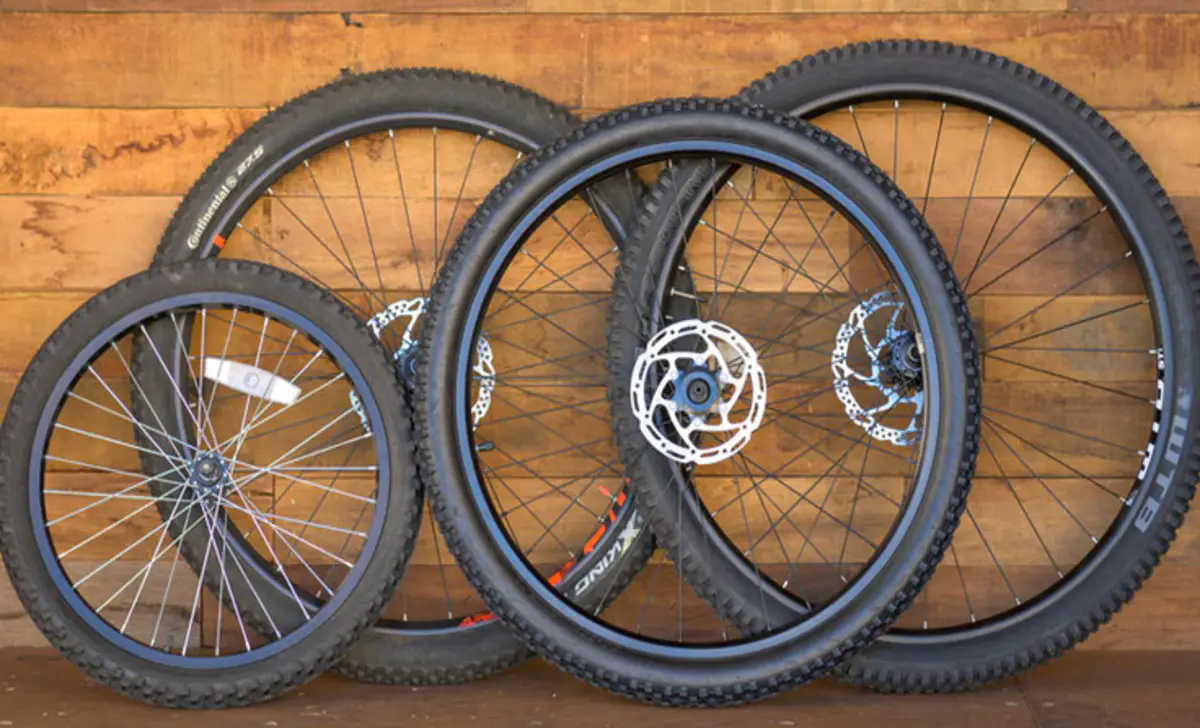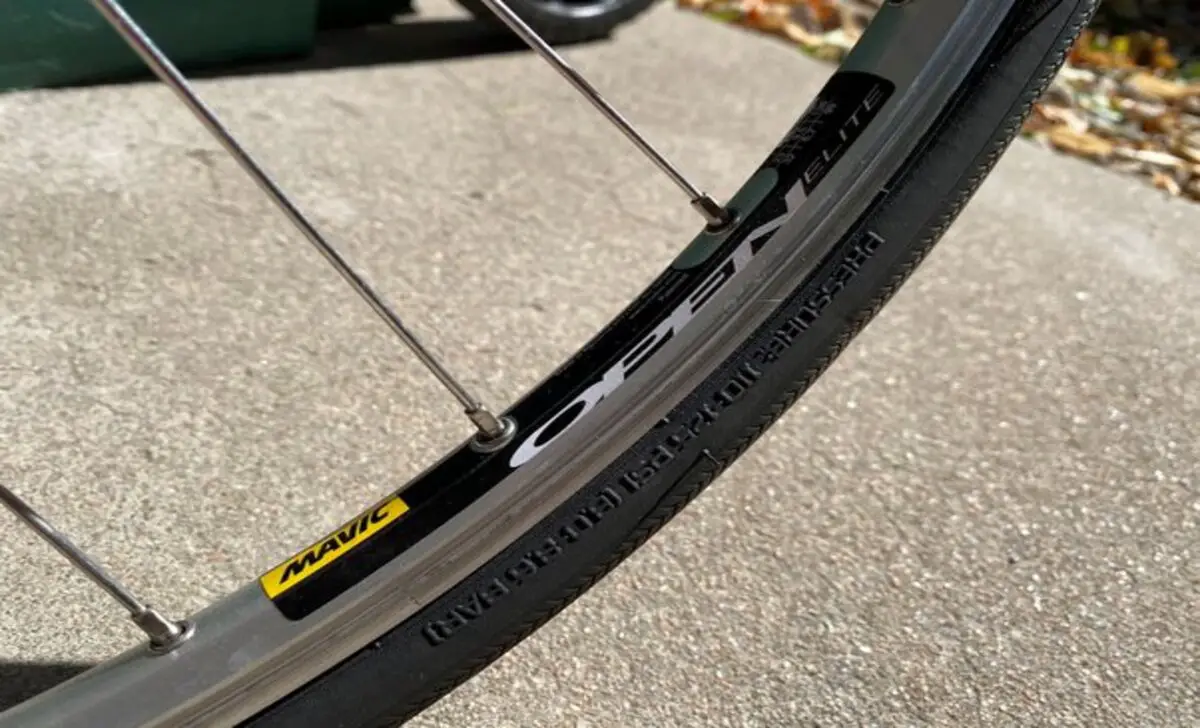In the world of cycling, there are countless factors to consider when choosing the perfect tire size for your bike. From terrain to weather conditions, the right tire can make all the difference in your riding experience.
Among the many options available, two often debated sizes are 700x23c and 700x25c. While both are commonly used for road bikes, there are distinct differences that can greatly impact your performance.
We will delve into the specifics of 700x23c and 700x25c tires, exploring their similarities, differences, and the pros and cons of each. Whether you are a seasoned cyclist or a beginner, understanding the nuances of tire size can help you decide which size is best for your needs.

At A Glance
| Specification | 700x23c | 700x25c |
| Tire Width | 23mm | 25mm |
| Tire Diameter | 700mm | 700mm |
| Rim Compatibility | Compatible with rims designed for 700c tires with a width of approximately 13-17mm. | Compatible with rims designed for 700c tires with a width of approximately 15-20mm. |
| Ideal Use | Typically used for racing and road biking due to their narrower profile, offering reduced rolling resistance and aerodynamic advantages. | Suitable for road biking, commuting, and touring, providing a balance between comfort and performance. |
| Handling | Offers slightly lower rolling resistance and increased aerodynamics but may sacrifice some comfort and traction. | Provides improved comfort and stability compared to narrower tires, especially on rough roads, at the expense of slight increases in rolling resistance and aerodynamic drag. |
| Recommended Pressure | Typically inflated to higher pressures (100-130 psi) for optimal performance, requiring careful maintenance to avoid pinch flats. | Usually inflated to slightly lower pressures (85-110 psi) to enhance comfort and traction, offering a more forgiving ride without sacrificing too much speed. |
| Terrain Suitability | Best suited for smooth roads and racing conditions, where speed and efficiency are paramount. | Versatile enough to handle various road conditions, including rough pavement and light gravel, balancing performance and comfort. |
Comparison Between 700x23c Vs 700x25c

A 700x23c tire is narrower and typically favored by road cyclists for its reduced rolling resistance and aerodynamic advantages. It provides a more responsive feel, especially during high-speed maneuvers and sprints.
On the other hand, a 700x25c tire offers slightly more comfort and stability due to its wider profile, making it a popular choice for endurance rides or rougher road surfaces. While both sizes have their merits, the decision ultimately depends on individual preferences, riding style, and terrain encountered.
| Size | 700x23c | 700x25c |
| Width | 23c | 25c |
| Overall Performance | Good | Better |
| Rolling Resistance | Low | Lower |
| Comfort | Slightly Firm | Comfortable |
| Grip | Average | Improved |
| Puncture Resistance | Average | Good |
| Durability | Moderate | Moderate |
| Recommended Use | Racing, Training | Racing, Training, Commuting |
700x23c Features
- Tread width: 23mm
- Suitable for road racing and high-performance riding
- Offers lower rolling resistance due to narrower width
- It provides better aerodynamics on smooth surfaces
- Maybe less comfortable on rough or uneven terrain
- Offers less grip and stability in wet or slippery conditions
Pros
- Reduces rolling resistance and allows for faster speeds
- Easier to navigate tight turns and corners.
- Lightweight
- Improved aerodynamics
Cons
- Limited traction
- Limited off-road capabilities
700x25c Features:
- Tread width: 25mm
- Suitable for road riding, including training and endurance cycling
- It offers slightly higher rolling resistance compared to 700x23c
- It provides improved comfort and stability on various road surfaces
- Offers better grip and traction in wet or slippery conditions
- It can absorb more vibrations and bumps for a smoother ride
Pros
- Excellent traction on dry roads
- Absorb road vibrations, resulting in a smoother ride
- Enhanced manoeuvrability
- Replacements or upgrades are readily available and easy to find.
Cons
- Increased vulnerability to punctures
- Limitations in off-road or uneven terrain
Factors To Consider When Choosing The Best Road Bike Tyres

The 700x23c tyre size has long been popular among road cyclists for its lightweight and aerodynamic properties. On the other hand, the 700x25c tyre size offers a slightly wider width, providing riders with added stability and comfort.
With a 25mm width, these tyres can absorb more road vibrations and provide better traction, particularly in wet conditions.The Michelin brand is well-known for its quality tyres, including 700x23c and 700x25c options. The Michelin brand is well-known for its quality tyres, including 700x23c and 700x25c options.
- Consider the type of riding that will be undertaken
- Assess the road conditions and terrain
- Choose a tyre with the appropriate tread pattern
- For smooth pavements, a slick tread pattern may be suitable
- For offroad or rough terrain, opt for a tyre with a more aggressive tread pattern
- Look for tyres with enhanced puncture protection for rough terrains
1.Road Conditions And Terrain
Regarding choosing the best & fastest tyre, considering various factors, such as road conditions and terrain, is important. Road conditions are crucial in determining the type of tyres that will provide optimal performance and safety. Whether you frequently ride on smooth pavement or rough surfaces or encounter wet conditions, selecting the right tyres can significantly enhance your cycling experience.
2.Riding Style And Preferences
One important factor to consider is the width of the rear tyre. Competitive riders typically prefer narrower tyres as they offer lower rolling resistance, allowing for greater speed and efficiency. On the other hand, wider tyres provide increased traction and stability, making them ideal for riders who prioritize comfort and control over speed.
Time is a crucial factor in determining the speed and performance of a bicycle tyre. Another aspect to consider is the tyre’s tread pattern. Smooth or slick tyres are popular among road cyclists as they provide minimal rolling resistance, enabling faster speeds on smooth surfaces.
3.Durability And Puncture Resistance
Durability is an essential quality to look for in road bike tyres. As cyclists, we rely on our tyres to withstand the rigours of the road, from rough surfaces to long distances. A durable tyre will last longer and consistently perform throughout its lifespan.
To ensure durability, looking for tyres made from high-quality materials and constructed using advanced manufacturing techniques is important. Puncture resistance is another crucial factor to consider.
Nothing can be more frustrating than experiencing a flat tyre during a ride. Puncture-resistant tyres are designed to minimize the risk of punctures, keeping cyclists on the road and preventing unnecessary delays.
4.Rolling Resistance And Speed
Rolling resistance refers to the energy required to keep the tyres in motion. A lower rolling resistance means less effort is needed to maintain speed, resulting in increased efficiency and faster cycling. Therefore, selecting tyres with minimal rolling resistance is crucial for those seeking optimal performance.
Choosing tyres with a smooth and supple tread pattern is essential to minimise rolling resistance. A smoother tread reduces friction between the tyre and the road, allowing for smoother and faster rides. Additionally, tyres with a higher thread count and lower inflation air pressure can enhance performance by reducing resistance.
5.Comfort And Grip
Comfort is crucial as it directly affects the overall riding experience and can make long rides more enjoyable. A tyre with adequate cushioning and shock absorption properties will help to reduce vibrations and impact from rough road surfaces, resulting in a smoother and more comfortable ride.
This can be achieved by using materials such as high-quality rubber compounds or adding additional layers of padding. Equally important is the grip provided by the tyres. Good grip ensures optimal control and stability, especially when cornering or navigating challenging terrain.
Tyres with a high level of grip will provide confidence to the rider, allowing them to push their limits without worrying about losing traction. Tread patterns, rubber compounds, and tyre width all play a role in determining the level of grip.
Which Is Better?

The choice between 700x23c and 700x25c tires depends on your priorities as a cyclist. If you prioritize speed and efficiency on smooth roads, 700x23c tires may be the better option.
However, if you value stability, comfort, and versatility across different riding conditions, 700x25c tires could be the more suitable. It’s always a good idea to consider your own riding style, the surfaces you’ll be riding on, and any personal preferences before deciding.
Conclusion
You can use these points when deciding between 700x23c and 700x25c. Choosing between tyre sizes can be a daunting decision. With so many options available, it’s easy to feel overwhelmed and unsure which is the right fit for your bike. One common debate among cyclists is the difference between 700x23c and 700x25c tyres.
Whichever one you choose, both sizes are everywhere, so it is common to see them. Many choose these tyres because they are very easy to find. However, if you want the best fit for your bike, you should be mindful of the advice above.
Frequently Asked Questions
1.Will 700x25c Fit 700x23c?
Yes, a 700x25c tyre will fit on a rim designed for a 700x23c tyre. A 700x25c tyre is a larger bead type compared to a 700x23c tyre. However, it can still fit on a wheel designed for a 700x23c tyre. Therefore, it is an excellent option for a slightly wider tyre without changing your wheel size.
2.What Does 700×23 25c Mean?
700×23 25c refers to the tyre size of a bicycle. The first number, 700, represents the tire’s diameter in millimeters. A larger tyre size, like 700×23 25c, can improve comfort and provide better stability on rough terrain, reducing the impact of jarring bumps. However, the extra weight of these tyres may slightly affect the bike’s overall performance, especially on hills.
3.Can I Put 23c Tyres On A 25c Rim?
No, putting 23c tyres on a 25c rim is not recommended. Regarding your query about fitting 23c tyres on a 25c rim, it is possible with caution. Ensure the tyre’s bead sits securely on the rim’s edge for proper traction. A 25mm tyre would be safer, providing more stability and comfort.
4.Is Higher Cc Better In Bikes?
While higher CC (cubic centimeters) may provide more power and speed, it also comes with increased fuel consumption and may be more difficult to handle for inexperienced riders.
5.What Is The Circumference Of A 700x25c Bike Tire?
The circumference of a 700x25C bike tyre is approximately 2133.33 millimetres. The circumference of a 700x25c bike tyre is typically around 2105mm for a 28mm inner tube and 1976mm for a 23mm inner tube. This measurement is essential for ensuring proper fit and performance of the tyre on the bike.
6.Is A 27-Inch Tyre Bigger Than 700C?
No, a 700C tyre is slightly larger in diameter than a 27-inch tyre. The 27-inch tyre is larger than the 700C in terms of diameter, with the 27-inch having a diameter of 630 mm compared to the 622 mm of the 700C tyre. The 700C tyre offers less rolling resistance and a more secure fit due to a tighter bead fit.
7.How Much Psi Do I Need For 700x25c?
The 700x25c tyre requires a recommended psi of 95-100 for optimal performance. When I bought my bike, it came with a 23mm tyre, which was great for speed and agility. However, I later upgraded to a 23c tyre for improved long-ride comfort.
8.Can I Use A 23C Tube In A 25C Tyre?
No, using a tube of the correct size for your tyre is recommended to ensure proper fit and performance. The width of the tyre is crucial when selecting the appropriate inner tube. While you can use a 23C tube with a slightly wider 25C tyre, there may not be much difference in performance. It is important to ensure compatibility for optimal performance and safety.
9.Can I Replace 700×23 With 700×35?
Yes, you can replace a 700×23 tyre with a 700×35 tyre as long as the new tyre fits within the frame and fork of your bike. I have a bike that is 10 years old, and the tyres fit 23 mm tyres, but I wonder if I can replace them with 700×35 instead. I am curious to see if the new tyres will fit and how they will ride on my bike.
10.Is 26 Inches The Same As 700c?
No, 26 inches and 700c are not the same size. 26 inches is a common size for mountain bike tyres, while 700c is a standard for road bike tyres. 26 inches and 700c are not the same. 700c wheels have a larger diameter, which can result in a wider and more stable ride, providing increased speed and efficiency. Additionally, 700c wheels tend to have wider tyre clearance and are often equipped with rim brakes for better stopping power.

I am passionate about writing blogs about bikes. I love riding my bike and love talking about it even more. My blog is the perfect place for anyone who loves biking as much as I do. Come check it out and learn some tips and tricks from me!


Very interesting read.